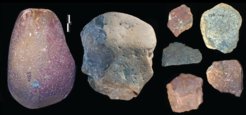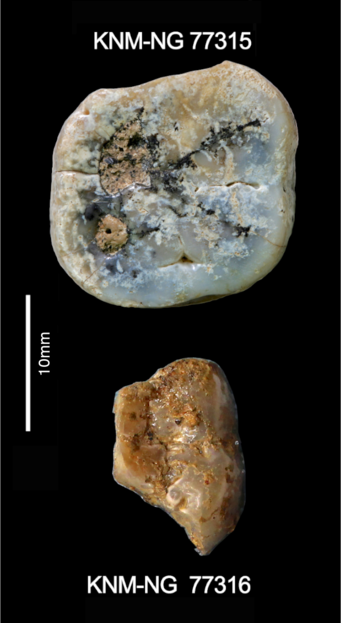Somebody Used Stone Tools to Butcher Hippos 2.9 million years ago
Excavations at Nyayanga, Kenya have revealed the oldest-yet Oldowan tools in close proximity to butchered animal bones and molars from the human relative Paranthropus
In the story of humankind, the use of stone tools is a development as important as the mastery of fire or the invention of the wheel. Although all these developments are attributed to members of the genus Homo, recent research is adding to our understanding of the earliest stone tool kits and raising questions about who may have been making and using them.

In the story of humankind, the use of stone tools is a development as important as the mastery of fire or the invention of the wheel. Although all these developments are attributed to members of the genus Homo, recent research is adding to our understanding of the earliest stone tool kits and raising questions about who may have been making and using them.
In a recent paper published by Science, an international team of researchers report on the oldest Oldowan tools yet discovered, pushing back the earliest dates for this technology by roughly 300,000 years and expanding its earliest-known geographical range by more than 1,300 kilometers. Excavations at Nyayanga, Kenya reveal new information about how the tools were used and the environment they were used in, while the discovery of molars from the hominin Paranthropus sp. indicate that the Oldowan toolkit may have been used by this “cousin” of the genus Homo.
Dating to between ca. 2.6 and 3 million years ago, the newly excavated tools were found among hippo bones with cut marks and other signs of butchery. This association, combined with the analysis of wear patterns on 30 of the stone tools, shows that individuals at the site were using the tools to pound, scrape and cut both animals and plants.
“The behaviors preserved at Nyayanga are at least 600,000 years older than prior evidence of megafaunal carcass and plant processing and substantially predate the increase in absolute brain size documented in the genus Homo after 2 million years ago,” the paper states.
Although the authors couldn’t definitively prove that the tools were made or used by Paranthropus, the discovery of the oldest known Paranthropus remains at a site with hundreds of stone artifacts and thousands of animal remains is highly suggestive.

Dr Rahab Kinyanjui, research group leader at the Max Planck Institute of Geoanthropology, analyzed microscopic plant structures at the site known as phytoliths to reconstruct the habitats these early tool users inhabited. Results show that Nyayanga was once a region of mixed woodlands and grasslands, indicating that early representatives of the hominin line occupied substantially open environments.
“Oldowan sites have been found in both grassy and wooded habitats, with these particular tools originating in a mixture of the two,” says Kinyanjui. “This suggests that one of the features of the technology was its ability to process foods with a variety of physical qualities in a variety of ecological settings.”
The discovery of Oldowan tools much older and farther away from the next known artifacts suggests that there is still much to learn about the human story and the evolution of our species and culture. As research into the past becomes increasingly interdisciplinary, the authors hope that future studies will continue to close gaps in spatial and temporal data, enabling a better understanding of evolutionary trajectories and creating a more vivid picture of the past.

